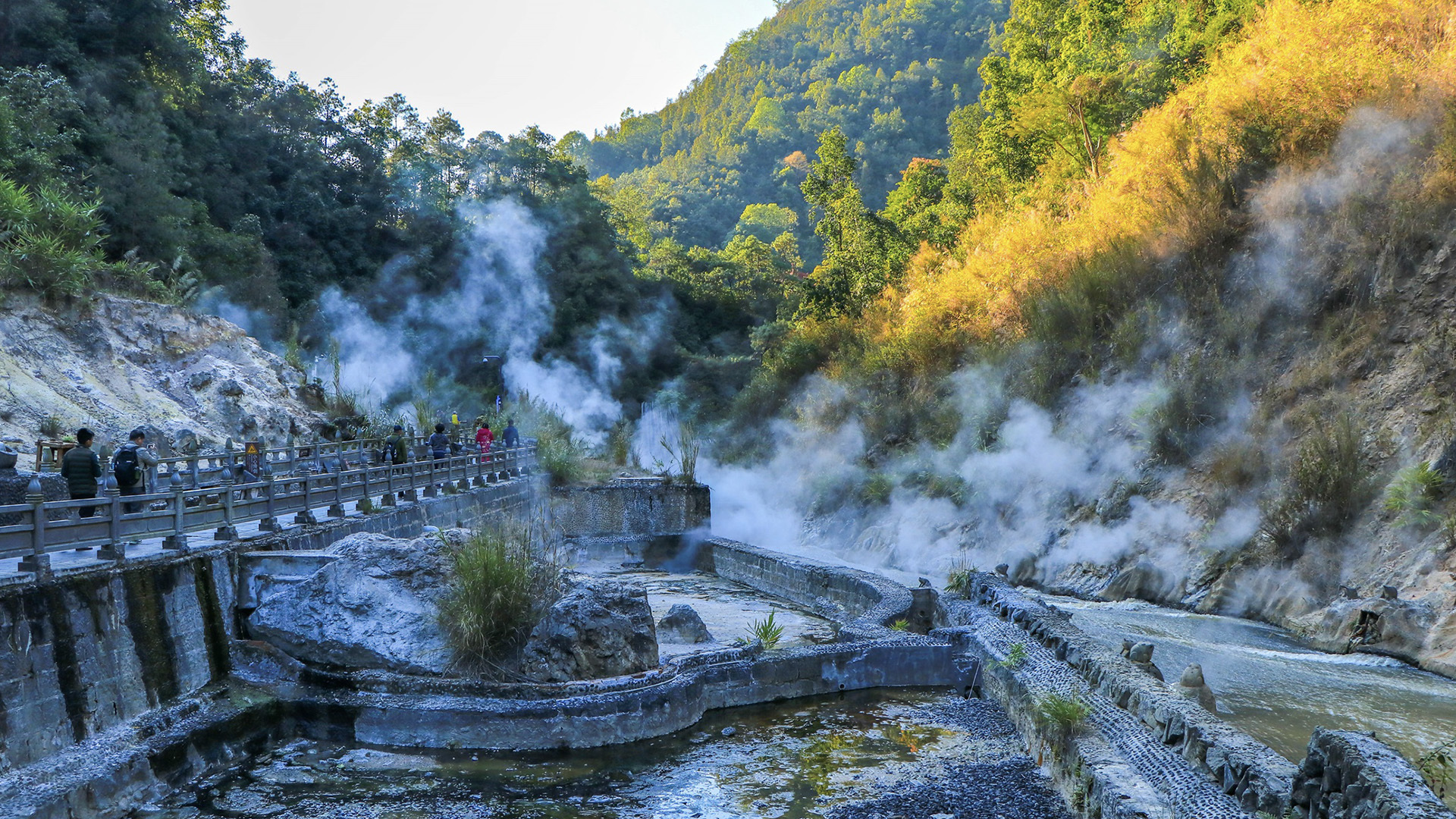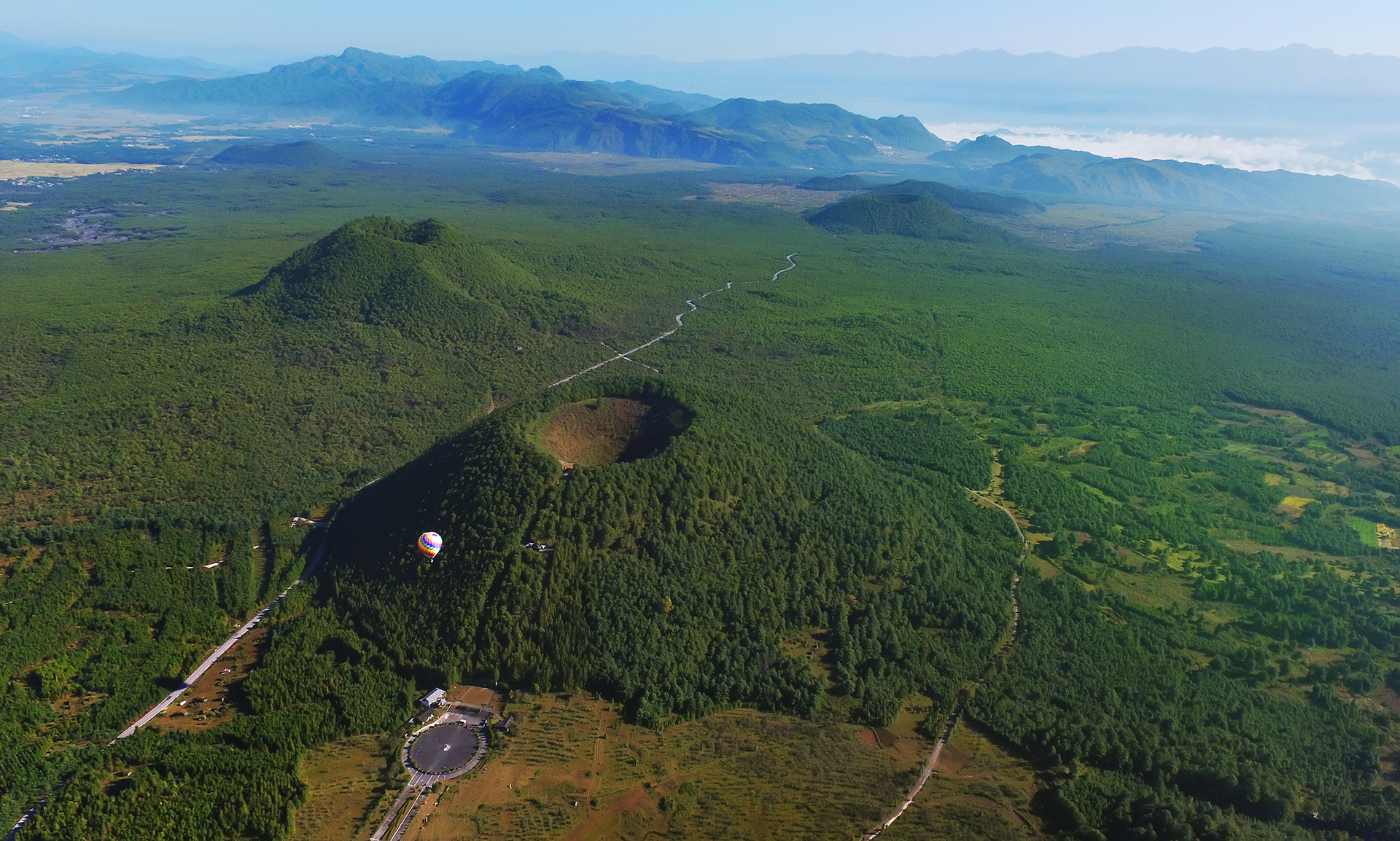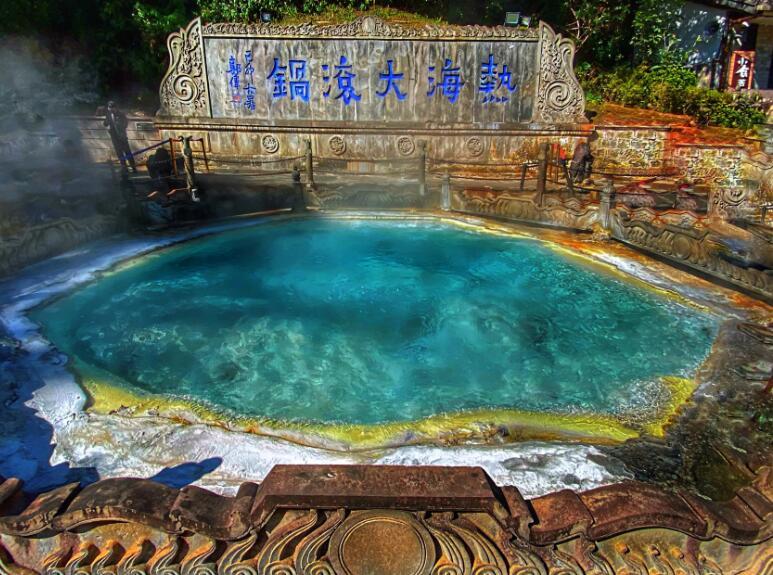Thermal Sea Scenic Area
The Thermal Sea Scenic Area is 8 km from the southwest of the border city- Tengchong, and has an elevation of about 1,520 m and an area of about 9 m2. In 1639, Xu Xiake, a geographer in Ming Dynasty, visited the Thermal Sea and gave a detailed and wonderful description of its geothermal landscape. During the Ming and Qing dynasties, it was called “an expanse of thermal sea” and was one of the twelve scenes of Tengchong in ancient times. Its current name is also gained because of it.
The Thermal Sea Scenic Area is rare in China for its high geothermal temperature, high pressure, rich steam, multiple forms of emergence, strong hydrothermal activities, soft water, proper pH value and high degree of mineralization. It is listed as one of the three geothermal regions in China, one of the eight provincial resort areas in Yunnan, a hot spring pilgrimage site of China and one of the top ten hot spring health care bases in China. The scenic area has a ring tour route of 5-kilometer-long, along which dotted with famous natural sceneries such as Big Boiling Pot, Songzi Well, Drumming Spring, Glasses Spring, Pearl Spring, Pleated Skirt-like Sinter, Toad’s Mouth and Lion’s Head.
Previous article::
Next:
2023 National Digital Literacy and Skills Enhancement Month campaign promotional video
2023-05-22
Announcement of the suspension of the opening of Volcano View
2023-05-18
Historical and Cultural City - Tengchong
2023-05-08











